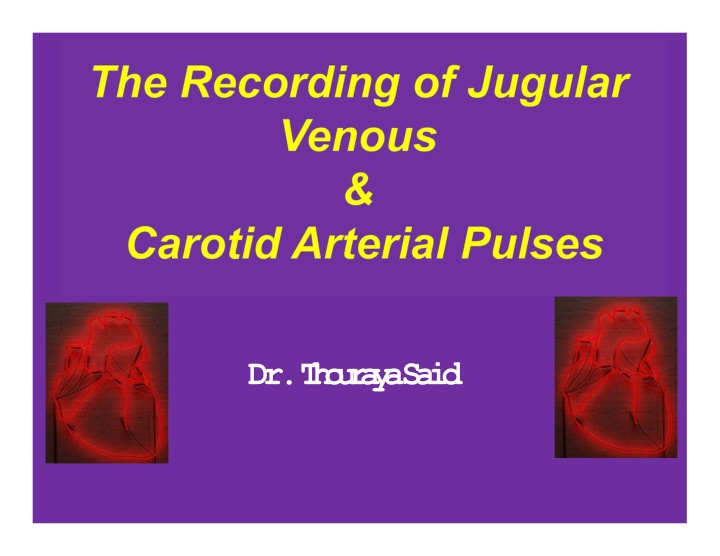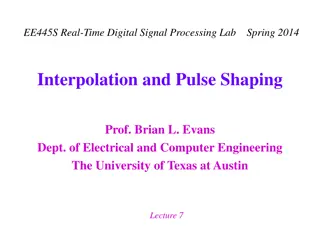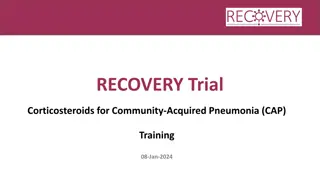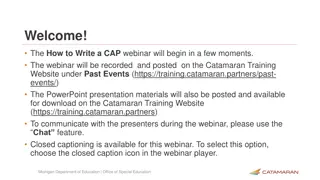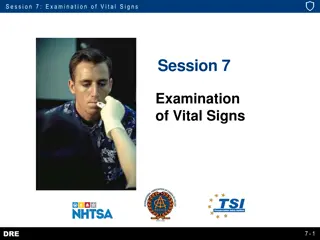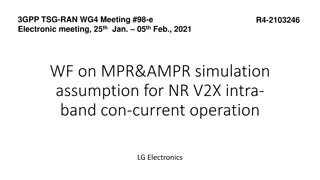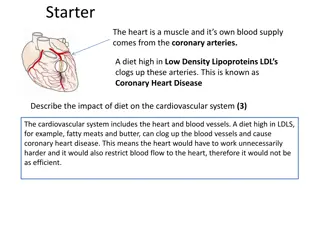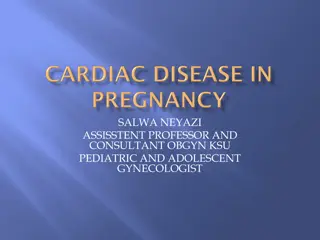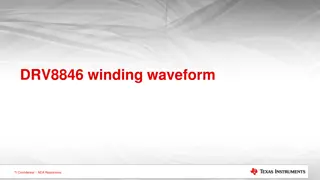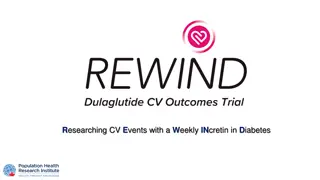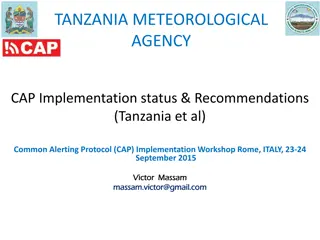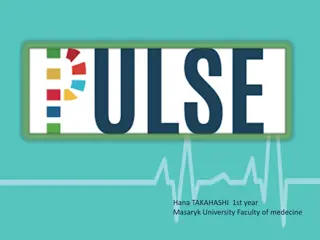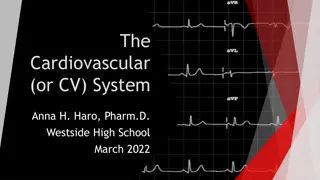Cardiovascular Physiology: JVP, CAP, and Pulse Waveform Analysis
In this educational material, you will delve into the intricate details of cardiovascular physiology, focusing on the Jugular Venous Pulse (JVP), Carotid Arterial Pulse (CAP), and how to analyze pulse waveforms. Explore the events influencing different waves in JVP and CAP tracings, the key differences between JVP and CAP, and the correlation with ECG and Phonocardiogram. Discover the significance of the carotid pulse in evaluating aortic and left ventricular function, distinguishing features between venous and arterial pulses, and how to examine and interpret CAP graphs. Gain insights into the hemodynamic changes in the heart and the diagnostic utility of pulse waveforms in cardiac diseases.
Download Presentation

Please find below an Image/Link to download the presentation.
The content on the website is provided AS IS for your information and personal use only. It may not be sold, licensed, or shared on other websites without obtaining consent from the author.If you encounter any issues during the download, it is possible that the publisher has removed the file from their server.
You are allowed to download the files provided on this website for personal or commercial use, subject to the condition that they are used lawfully. All files are the property of their respective owners.
The content on the website is provided AS IS for your information and personal use only. It may not be sold, licensed, or shared on other websites without obtaining consent from the author.
E N D
Presentation Transcript
Objectives Identify andunderstand: The events causing the different waves of the JVP & CAP tracings. Difference between JVP and CAP. Correlation between JVP, CAP, ECG and Phoncardiogram.
The carotidpulsetells about the aorta and l e f t ventricularfunction. JVP provides information regarding hemodynamic changes in the rightside oftheheart. Evaluation of pulse waveform helps in the diagnosis of certain cardiac diseases & assessing their severity.
Distinguishing features between venous and arterial pulses JVP CAP Visible but notpalpable Palpable Not obliterated by pressure Obliterated by pressure 2 pulsations per systole 1pulsation per systole Decreases with inspiration No effect of respiration Enhanced by H-J-Reflex No effect of abdominal pressure
Carotidarterial pressure The carotid pulse can be taken on the right side of the neck over the carotid artery in order to determine heart rate. When blood is forced into the aorta during ventricular systole, two things happen: 1. Blood is moved forwards. 2. A pressure wave is set up which travels along the wall of arteries (faster than the flow of blood), expanding the arterial walls as it travels. The expansion of the arterial wall is palpable as the pulse.
How toexamine Subject supine at 30 head slightly bent to the examined side. 1. Feel CAP on medial side of SCM alongside the lateral border of thyroid cartilage. 2. Apply transducer over CAP using soft rubber band & connect it to recorder. 3.
Recorded CAP graph Anacroticlimb (rapid upstroke): Sharp rise in pressure to a peak of 120mmHg during maximum ejection phase of ventricular systole. Dicroticnotch (Incisura): Aortic valve snaps shut; blood rebounded against arterial walls produces slight elevation in pressure (marks beginning of ventricular diastole). Dicrotic limb(descending limb after Incisura): in pressure to 80mmHg due to elastic recoil of arterial wall.
Cardiac Cycle duration: 0.8sec. Ventricular systole: Ventricular diastole: 0.3sec. 0.5sec.
CAP andECG DicroticNotch(Dn)orIncisura: Coincides with the second heart sound when we relate it to a phonocardiogram and occurs just after the T-wave when we relate it to an ECG.
AbnormalCAP Aortics t e n o s i s :pressure drops. Aorticregurgitation: pulse strong.
JugularVenousPressure Pressure changes in the right atrium are transmitted directly to the internaljugularvein(IJV)as there are no valves between this vein and the right atrium. The external jugular vein is easier to see but has valves and is subject to compression as it enters the chest (tortuous course).
How toexamine Use the right IJV. Patient at a 45 angle. Head turned slightly tothe left. IJV runs from medial end of clavicle to the ear lobe under medial aspect of theSCM. Find its pulsation between the 2 attachments of SCM. More prominent with Valsavamanoeuvre.
JVP waveform Classically 3 visible peaks (waves) and 2 visible descents/troughs.
Causes ofthese waves a wave:right atrial systole. Right atrial contraction in late diastole to propel additional blood into ventricles. c wave: transmitted manifestation of the rise in atrial pressure produced by bulging of tricuspid valve into the right atrium during isovolumentric ventricular contraction.
x descent:atrial relaxation. Due to downward displacement of the tricuspid valve by the contraction of papillary muscles during ventricular systole. v wave:rise in atrial pressure by venous return before tricuspid valve opens. y descent:tricuspid valve opens. Passive rapid ventricular filling, decreasing right atrial pressure.
How toidentifyJVP tracing? 1. First identify v wave, you will find it between two descents x & y. 2. The a & c wave precede the xdescent. 3. x more prominent than y. c,x and v are systolic. y and a are diastolic. 4.
Correlations a wave: Follows P wave of ECG. Precedes upstroke of carotid pulse. Just before S1. c wave follows QRS and S1. v wave peaks after S2 which is synchronous with dicrotic notch (late systole).
Clinicalabnormalities awave: Prominent: Right heart failure, pulmonary stenosis, pulmonary hypertension, tricuspid stenosis. Absent: Atrial fibrillation. Cannon wave: Complete AV block, atrial flutter, ventricular tachycardia. c wave: Prominent in tricuspid regurgitation. v wave: Prominent in tricuspid regurgitation.
